|
Pivotal World Series Moments
Red Sox Launch Homer Barrage
1915 World Series Game 5: Boston Red Sox @ Philadelphia Phillies
The Red Sox hit just 14 home runs during the 1915 season. That ranked second-to-last in the American League in which the New York Yankees led the league with 31 homers in that Dead Ball Era.
The Philadelphia Phillies, on the other hand, led the National League in homers with 58, which was a little more than twice the league average of 28 per team. The Phils had the benefit of playing their home games in Baker Bowl, whose right field fence was only 280' from home plate down the line and just 300' away in right-center. The left field distance of 341' and center field mark of 408' provided fertile ground for inside-the-park home runs.
To make matters worse for the pitchers, Phillies owner William F. Baker, intent on making as much money as he could off World Series games, installed temporary seating in left and center field.
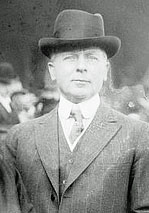  L: William F. Baker; R: Baker Bowl in 1928 Neither the Red Sox nor the Phillies hit a homer during the first four games of the series, none of which produced more than four runs. The Phils won the first game 3-1 but lost the second game 2-1. After two games at Baker Bowl, the series shifted to Fenway Park where the Red Sox won two more 2-1 games.
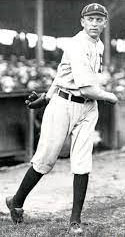  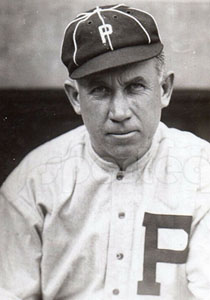 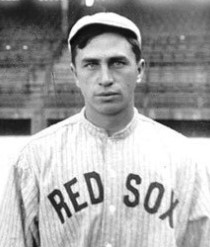 L-R: Erskine Mayer, Rube Foster, Pat Moran, Harry Hooper The teams traveled back to Philadelphia for Game 5. With ace Grover Cleveland sidelined with a sore arm, Erskine Mayer, 21-15 during the season, started for the Phillies against Rube Foster (19-8) of the Red Sox. The duo had faced each other in Game 2 with both going the distance. Boston won the game 2-1.
The Phils needed a fast start and got it when they scored two in the first. With his club with their backs to the wall, Phils manager Pat Moran didn't stick with Mayer long when the righthander gave up six hits and two runs in just 2 1/3 innings. One of the hits was a home run to the temporary seats in center field by Harry Hooper.
Moran turned to his ace lefthander, Eppa Rixey, who had yet to appear in the Series. Why didn't the manager use him earlier? Rixey had a 2.14 ERA at the end of August. But September was not kind to him. He compiled a 5.79 ERA in three starts. So his skipper was taking a chance that Rixey would regain his earlier form.
The Phillies retook the lead with two in the fourth, including Phillies's home run over the rightfield fence. Rewarding his manager's faith in him, Rixey shut down the Red Sox to protect the two-run advantage heading into the eighth. But the lead vanished when Del Gainer led off with an infield hit, and Duffy Lewis slammed a 1-1 pitch into the left field bleachers.
Foster walked Gavvy Cravath with two out in the bottom of the eight, then hit Fred Luderus with a pitch. But Rube bore down and got Possum Whitted to ground out to keep the game knotted.  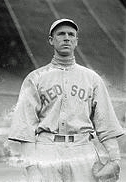 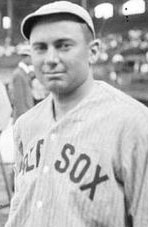 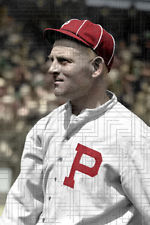 L-R: Eppa Rixey, Del Gainer, Duffy Lewis, Gavvy Cravath After Foster fanned to lead off the top of the ninth, Hooper struck again. As the Philadelphia Inquirer writer described it: "Rixey wound up in his awkward but effective style. The ball left his hands, straight and swift. Hooper swung with his bat and 20,306 heartsick fans watched it soar through the air, finally bouncing far out to the temporary bleachers near the flag pole. A youth on the first row leaned over and corraled the ball. It would have gone in anyhow." Just like that, the Red Sox led, 5-4. The team that hit only 14 homers all season now had three in one game! And Hooper had matched his season total of two homers in one afternoon!
Until 1931, a fly ball that bounced over or through the outfield fence was a home run.
The Phils went down 1-2-3 in the bottom of the ninth, and Boston celebrated its third World Series championship.
|